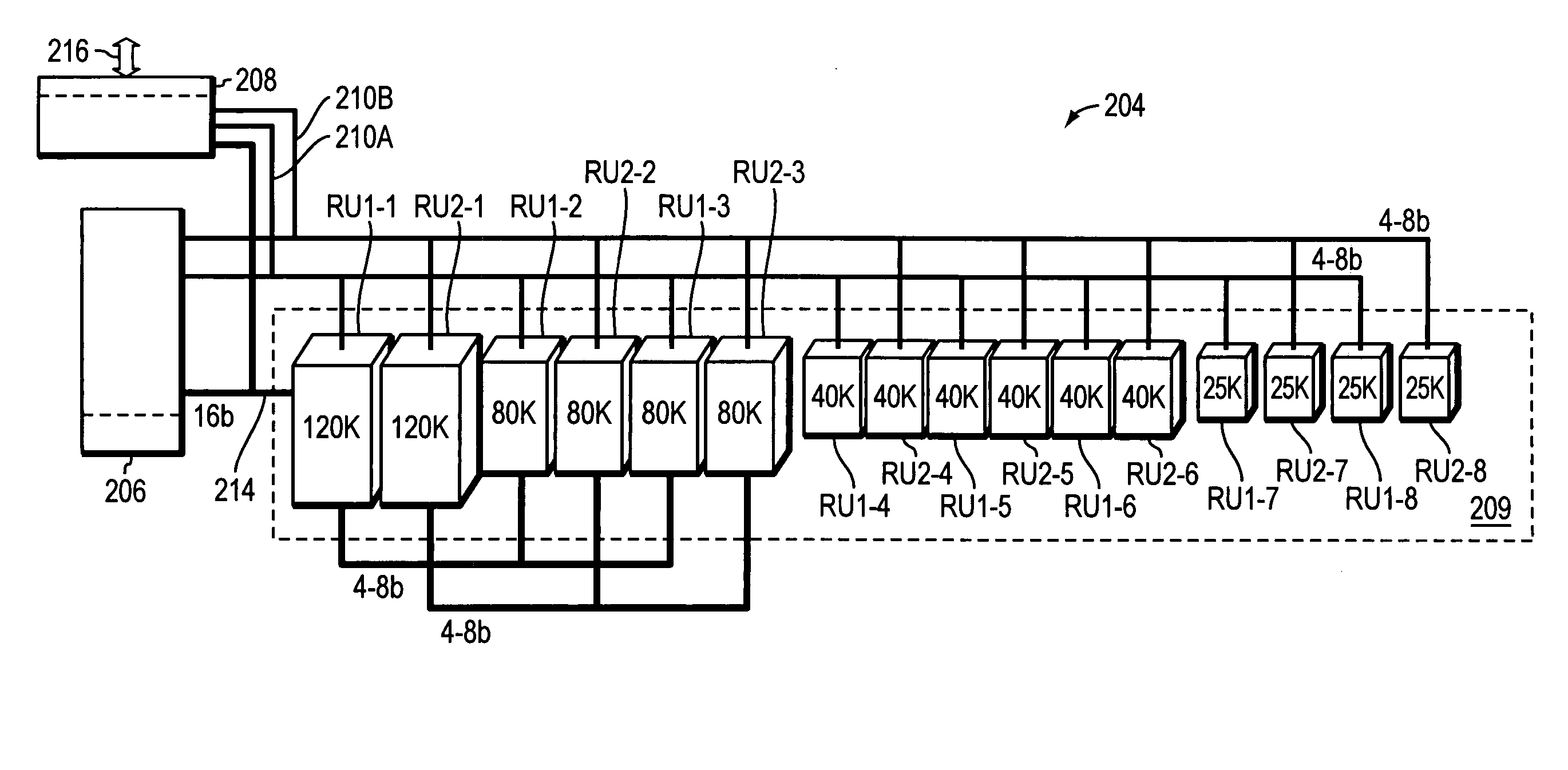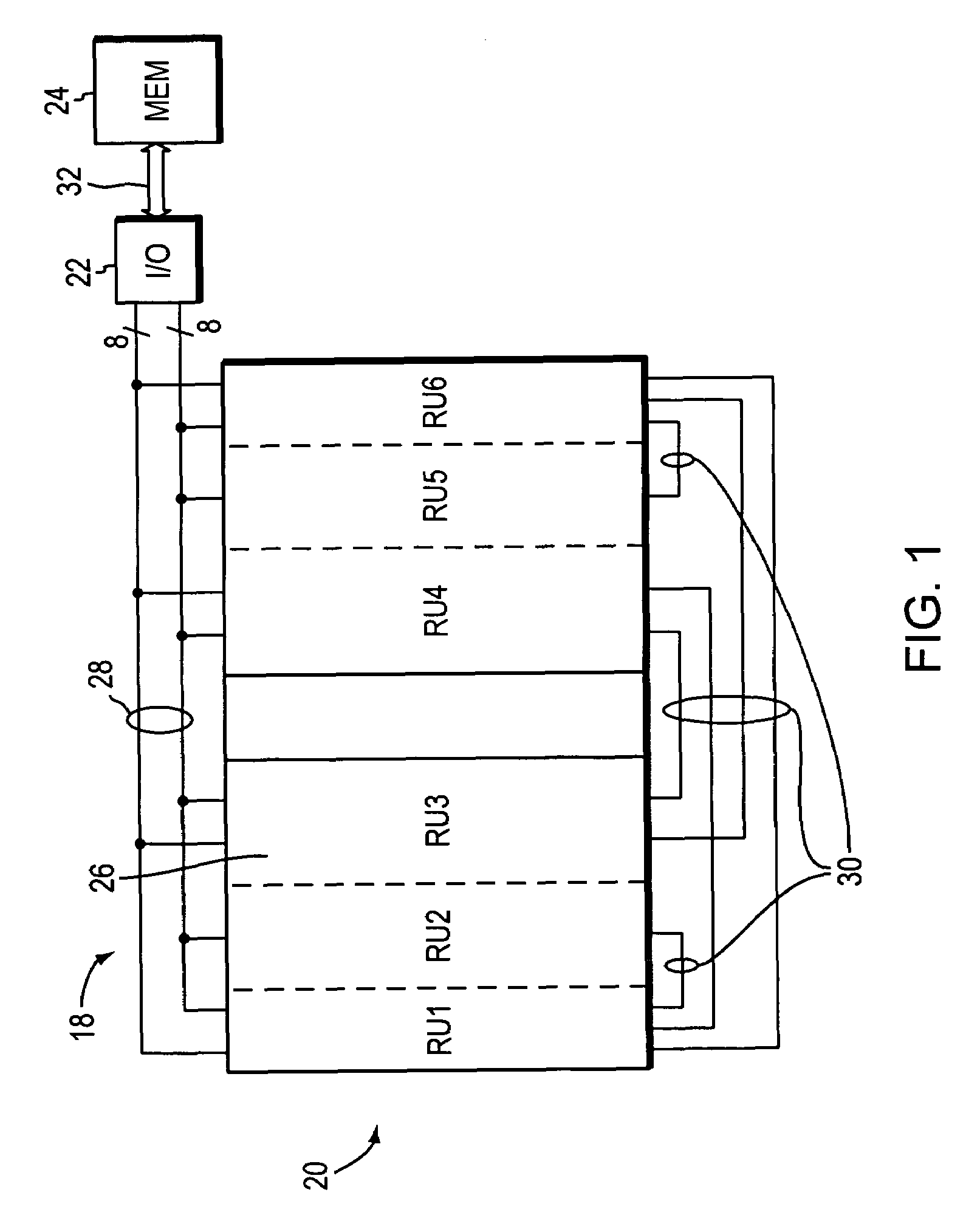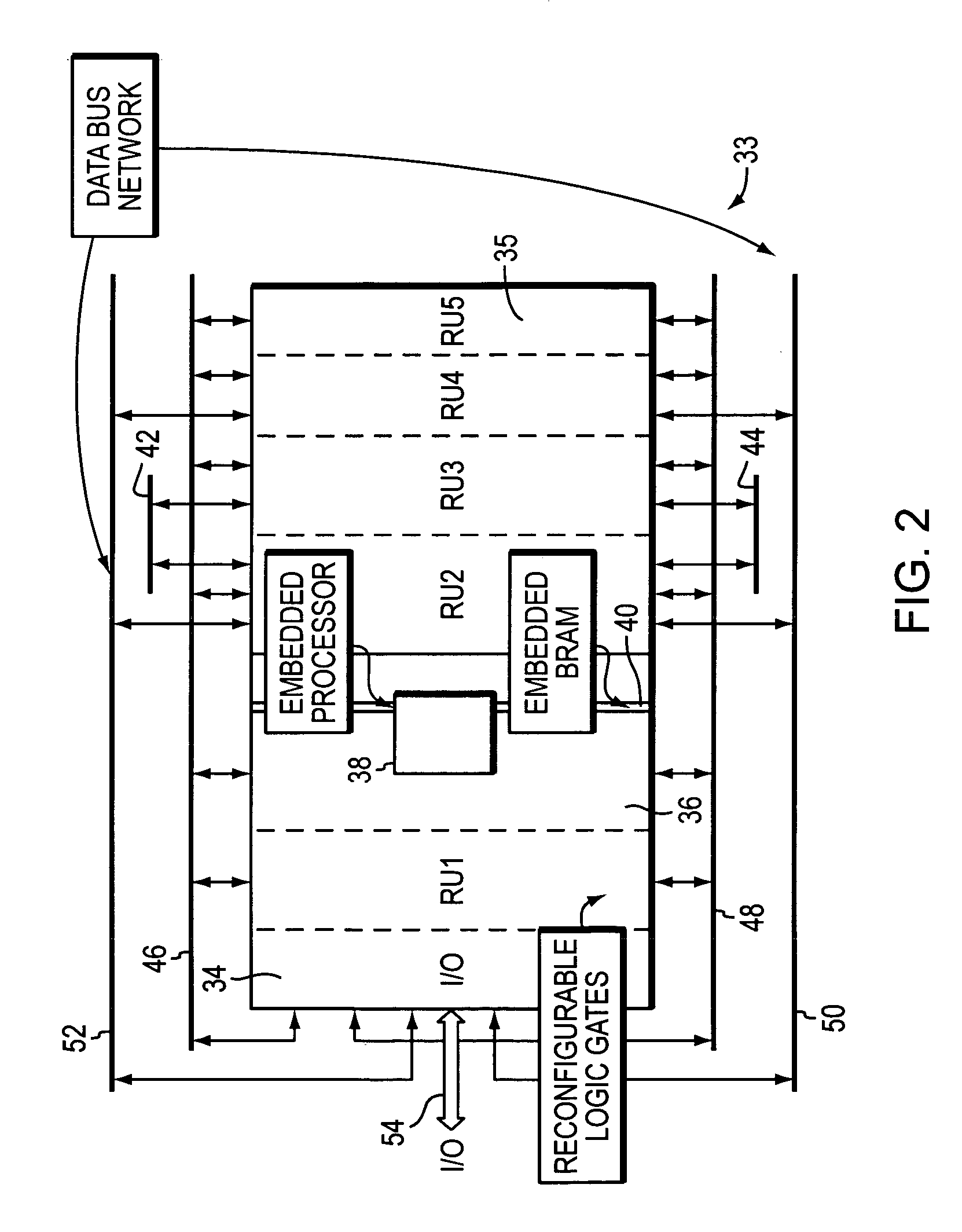Systems and methods for reconfigurable computing
a reconfigurable computing and system technology, applied in computing, digital computers, instruments, etc., can solve the problems of ineffective current designs, communication bottlenecks, and current designs that cannot accommodate runtime-processing adaptation with high efficiency
- Summary
- Abstract
- Description
- Claims
- Application Information
AI Technical Summary
Benefits of technology
Problems solved by technology
Method used
Image
Examples
Embodiment Construction
[0023]In existing applications, single-chip FPGAs are typically reconfigured on a chip-wide basis. As a result, the smallest reconfigurable unit is the chip and not some portion of it. Each FPGA may include multiple processing elements, i.e., a set of logic gates that are logically separated from the remaining logic gates on the FPGA. Two sets of logic gates are logically separated from one another when the two sets do not share any logic gates. Even where multiple processing elements exist within a chip, however, in most current approaches, the processing elements are all reconfigured at the same time. Thus, for purposes of reconfiguration, the FPGA is not treated as having isolated sections that can be individually reconfigured. Other current approaches do include multiple reconfigurable units within the same FPGA, however, these approaches are very limited and generally ineffective. First, the current approaches provide few reconfigurable units. Second, the current approaches res...
PUM
 Login to View More
Login to View More Abstract
Description
Claims
Application Information
 Login to View More
Login to View More - R&D
- Intellectual Property
- Life Sciences
- Materials
- Tech Scout
- Unparalleled Data Quality
- Higher Quality Content
- 60% Fewer Hallucinations
Browse by: Latest US Patents, China's latest patents, Technical Efficacy Thesaurus, Application Domain, Technology Topic, Popular Technical Reports.
© 2025 PatSnap. All rights reserved.Legal|Privacy policy|Modern Slavery Act Transparency Statement|Sitemap|About US| Contact US: help@patsnap.com



